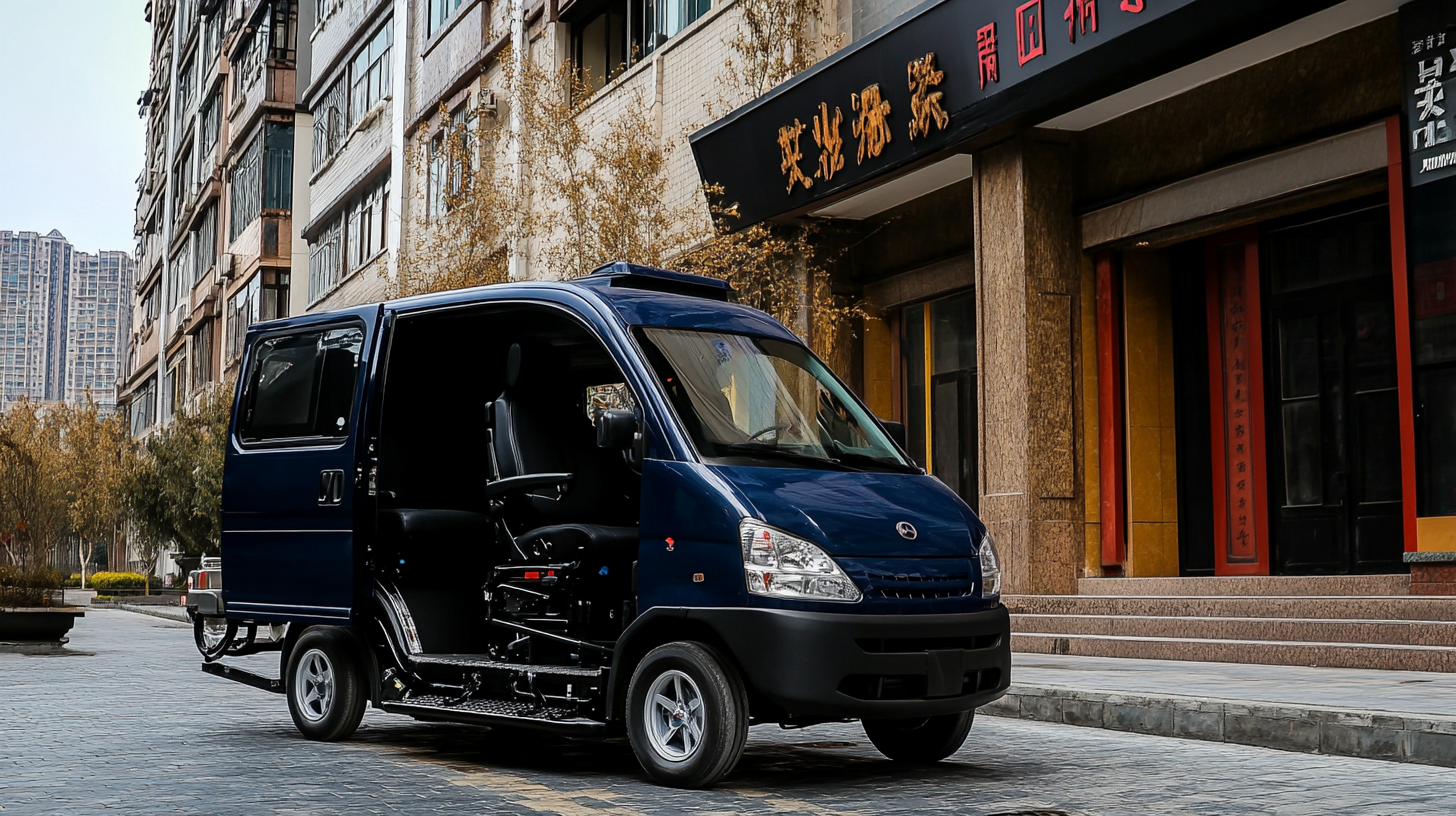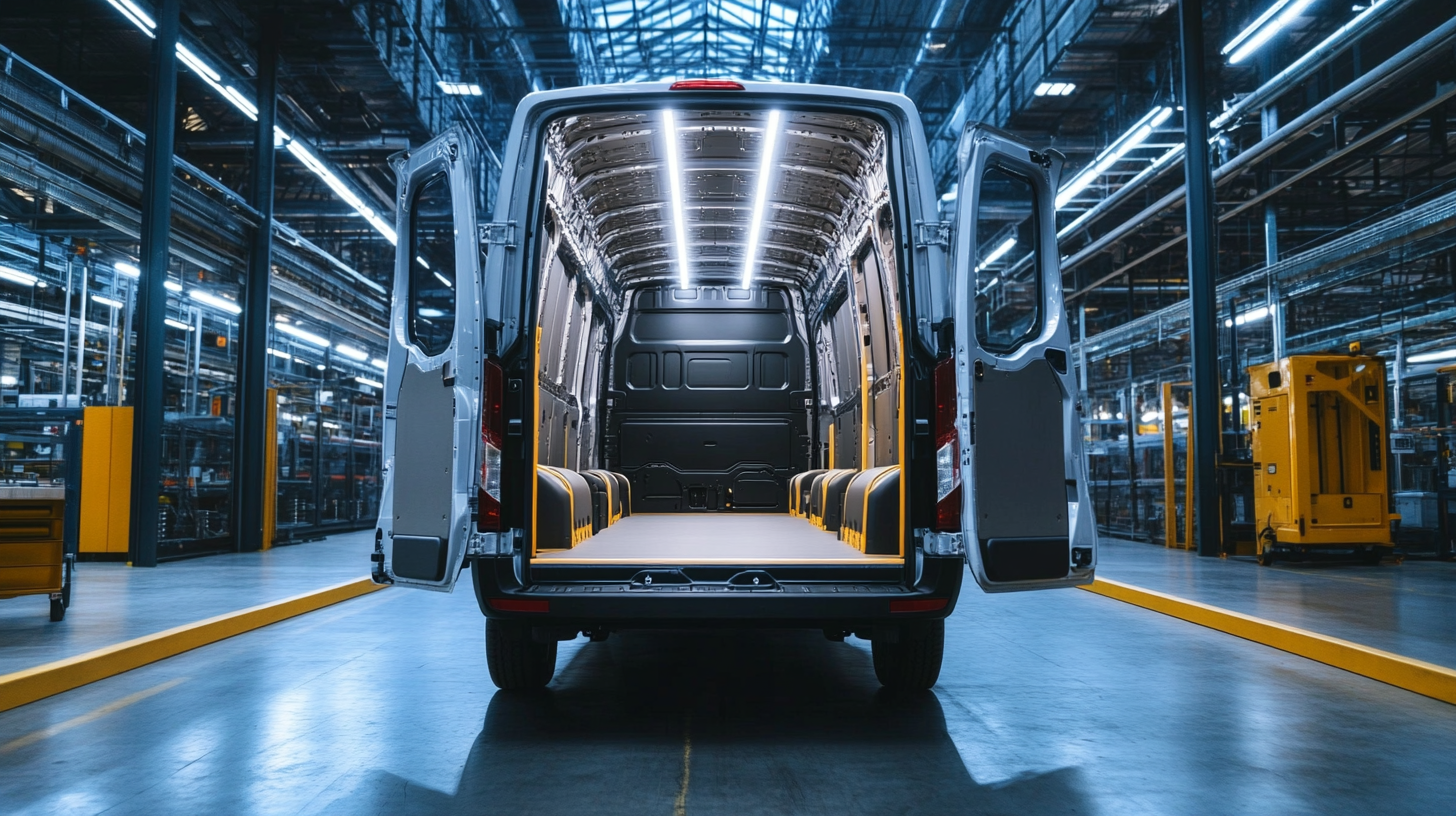China's Resilient Manufacturing Thrives Amidst US China Tariff Challenges for Best Handicap Accessible Vans
In the wake of escalating US-China tariffs, one might assume that the manufacturing sector in China would falter under the weight of trade challenges. However, amid these adversities, China's resilient manufacturing industry has demonstrated remarkable adaptability and strength, continuing to thrive in various sectors, including the production of handicap accessible vans. These specialized vehicles are essential for enhancing mobility and independence for individuals with disabilities, making their availability a priority despite the broader economic tensions. China's manufacturers are not only focusing on maintaining quality and efficiency but are also innovating to meet the growing demand for wheelchair-accessible transportation. This blog explores how, despite the tariffs imposed, China's commitment to manufacturing excellence has enabled it to remain a key player in supplying handicap accessible vans, ultimately benefiting consumers who rely on these vital vehicles for their daily lives.

Challenges of US-China Tariffs on Manufacturing Sector
The ongoing U.S.-China trade tensions pose significant challenges to the manufacturing sector, particularly for industries reliant on tariff-exposed products. While tariffs were intended to alter trade balances and protect domestic production, their impact has often been counterproductive. Many companies are not returning manufacturing to the U.S. as they face high operational costs; instead, they are opting to source materials and produce goods in lower-tariff regions, highlighting a global supply chain resilience strategy.
China, for its part, demonstrates a remarkable capacity to adapt and thrive despite these external pressures. The manufacturing sector is not intimidated by tariffs alone; rather, it’s the absence of a coherent U.S. industrial strategy that raises concerns. Without a strategic approach that emphasizes not just tariffs but also labor policies and investment in innovation, the U.S. risks losing greater market share. As businesses navigate the complexities of tariffs, the agility of Chinese manufacturing remains a formidable challenge for American industries, which must seek smarter solutions to remain competitive.
Strategies Employed by Chinese Manufacturers to Overcome Tariffs
In the face of escalating tariffs imposed by the United States, Chinese manufacturers have employed a variety of strategic approaches to maintain their foothold in the auto industry, particularly in the production of handicap accessible vans. One effective strategy is the diversification of supply chains. By sourcing materials and components from different countries, manufacturers can mitigate the impact of tariffs on imported goods. This not only reduces costs but also enhances the resilience of their production processes against geopolitical fluctuations.
Another critical tactic has been the investment in advanced manufacturing technologies. By integrating automation and smart manufacturing into their production lines, Chinese firms can increase efficiency and lower production costs. This allows them to offer competitive pricing while maintaining quality. Furthermore, some manufacturers have adapted by targeting emerging markets within Asia and beyond, thus expanding their customer base and compensating for potential losses in the U.S. market. These strategic adaptations demonstrate the ability of Chinese manufacturers to not only withstand external pressures but also thrive despite them.
China's Resilient Manufacturing Amidst US-China Tariff Challenges
The above chart illustrates the percentage growth of China's manufacturing sector over several quarters, demonstrating resilience and adaptability amidst US-China tariff challenges. Despite tariff obstacles, Chinese manufacturers have employed strategies such as diversifying supply chains and enhancing production efficiency, leading to continued growth in the sector.
The Role of Innovation in China's Resilient Manufacturing Growth
In the face of US-China tariff challenges, China's manufacturing sector has demonstrated remarkable resilience, particularly through its commitment to innovation. According to a report by the International Federation of Robotics, China has rapidly become a leader in industrial robotics, with a yearly growth rate of over 20% in automated solutions. This shift towards advanced manufacturing technologies not only enhances productivity but also supports the production of specialized products such as handicap accessible vans. By integrating cutting-edge robotics and AI, manufacturers are optimizing their processes, allowing for more efficient design and production cycles.
Moreover, in 2022, a report by McKinsey & Company highlighted that Chinese manufacturing firms invested approximately $220 billion in research and development, focusing on creating high-quality materials and innovative designs. This investment has enabled manufacturers to produce vans that cater to a diverse range of needs, ensuring accessibility and comfort for individuals with disabilities. The balance between innovation and strategic production in China allows the industry to not only weather external economic pressures but also to set new standards in quality and accessibility in the automotive sector.

Impact of Global Supply Chain Shifts on China's Manufacturing
As global supply chains continue to evolve, China's manufacturing sector has demonstrated remarkable adaptability, particularly in the specialized vehicle market for handicap accessible vans. The ongoing trade tensions with the United States and shifting tariffs have presented challenges, yet they have also catalyzed innovation and efficiency within Chinese manufacturing. Companies are increasingly diversifying their supply sources and optimizing production methods, ensuring they remain competitive even when faced with external pressures.
Moreover, the impact of these global supply chain shifts is evident in the way manufacturers are responding to domestic and international demands. With a growing emphasis on accessibility, Chinese firms are investing in cutting-edge technology and sustainable practices to enhance the production of handicap accessible vans. This has led to an influx of high-quality vehicles that not only meet regulatory standards but also cater to the needs of a diverse clientele, including those with mobility challenges. As such, China's resilience in manufacturing highlights its pivotal role in the global market, turning potential obstacles into opportunities for growth and improvement.
China's Manufacturing Landscape Amidst Tariff Challenges
Future Prospects for China's Manufacturing in a Tariff-Heavy Environment
Amidst the escalating tariff tensions between the United States and China, China's manufacturing sector has exhibited remarkable resilience, particularly in the production of handicap accessible vans. According to a report by the International Organization of Motor Vehicle Manufacturers, China accounted for approximately 30% of the global van production in 2022, highlighting its significant role in this niche market. The demand for accessible vehicles is growing, driven by increasing awareness of inclusivity and mobility for people with disabilities. This sector features a unique advantage: the ability to adapt swiftly to market needs, circumventing some of the tariff-induced challenges.
Moreover, projections from the China Association of Automobile Manufacturers indicate that the country's automotive production will remain robust, with an expected growth rate of 5% annually over the next five years, despite a thickening tariff environment. This growth is powered by state support for innovative manufacturing practices and a focus on technology integration, which helps mitigate some cost impacts from tariffs. As manufacturers increasingly invest in supply chain diversification and local sourcing, the future looks promising for China's manufacturing landscape, suggesting a path forward that could maintain stability while navigating the complexities of international trade relations.

